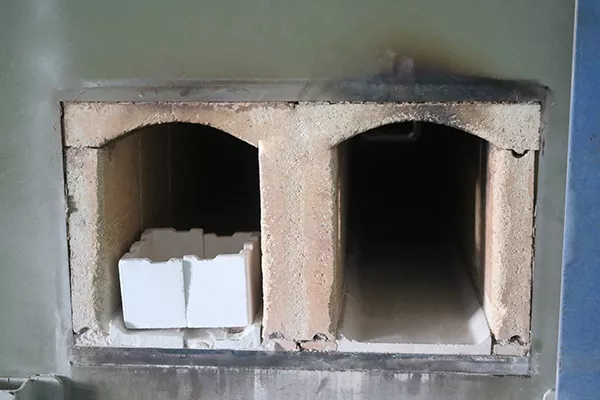advanced ceramics Production Step 3
Ceramic Sintering
Overview Guide
Sintering is the key and most difficult part. Molded industrial ceramics have to face uncertain temperatures, pressures, and times, and the heat must be controlled very accurately to achieve excellence. Bringing all the parameters to their best state requires engineers to put in a lot of effort and acceptance.
During the sintering process, industrial ceramic materials are processed in a well-adjusted sintering furnace to tightly sinter the advanced ceramic particles together to form a strong and compact solid.
Common Sintering Methods
In engineering ceramics, there are many methods for sintering materials. Process sintering technology mainly depends on the type of customer’s ceramic material, the performance required, and different methods are used due to the impact of manufacturing constraints and application requirements.

Choose the right mothod depends on the temperature and pressure conditions, control capabilities and more. Different sintering methods may have varying effects on the density, crystalline structure, mechanical properties and chemical stability of ceramic products. Therefore, specific application needs should be considered when selecting and optimizing the sintering method.

Why you should know ceramic sintering
In terms of density and compactness
You can choose to master the sintering technology for high-density ceramic products.
Use the most appropriate technology to improve performance and create more cost-effective, high-precision and advanced ceramic products.
Promote customization and variety of options
Mastering the advanced sintering process enables you to master the special functions and customization capabilities of ceramic products. By controlling the composition of additives and sintering conditions, ceramic products can exhibit special properties such as electrical conductivity, thermal conductivity and corrosion resistance, which can save lower costs and shorten time.
How Gorgeous Optimize the Sintering Process to Improve the Product Performance


When talking about the impact of advanced ceramic sintering processes on product performance, the following aspects are worth considering:
Temperature & Time Control
By controlling the temperature and time of the sintering process, product properties can be customized. We use smart equipment and big data models to present encounters in the sintering process in advance, predict errors in advance and improve densification, enhance crystal growth and reduce porosity.
Pressure & Atmosphere Adjustment
Improve the pressure and customized environment in the sintering furnace, and control and track the crystallization and density of sintering advanced ceramics throughout the process.
Additive & Binder Optimization
Using high-quality additives and binders, analyzing their composition and properties, and achieving the required structural standards and customization needs in customized ceramic products.
Post-Sintering Treatments
Post-sintering treatment should include annealing, hot isostatic pressing or surface treatment, and taking corresponding measures can improve the performance of industrial ceramic products. This eliminates residual stress, improves surface quality, saves costs and speeds up production.
Your Reliable Technical Ceramic Manufacturer - Gorgeous
Gorgeous is a certified manufacturer that specializes in providing advanced ceramic products for the electronic, automotive, engineering, medical and other industries. We also provide customization services to meet your specific project or business demands.